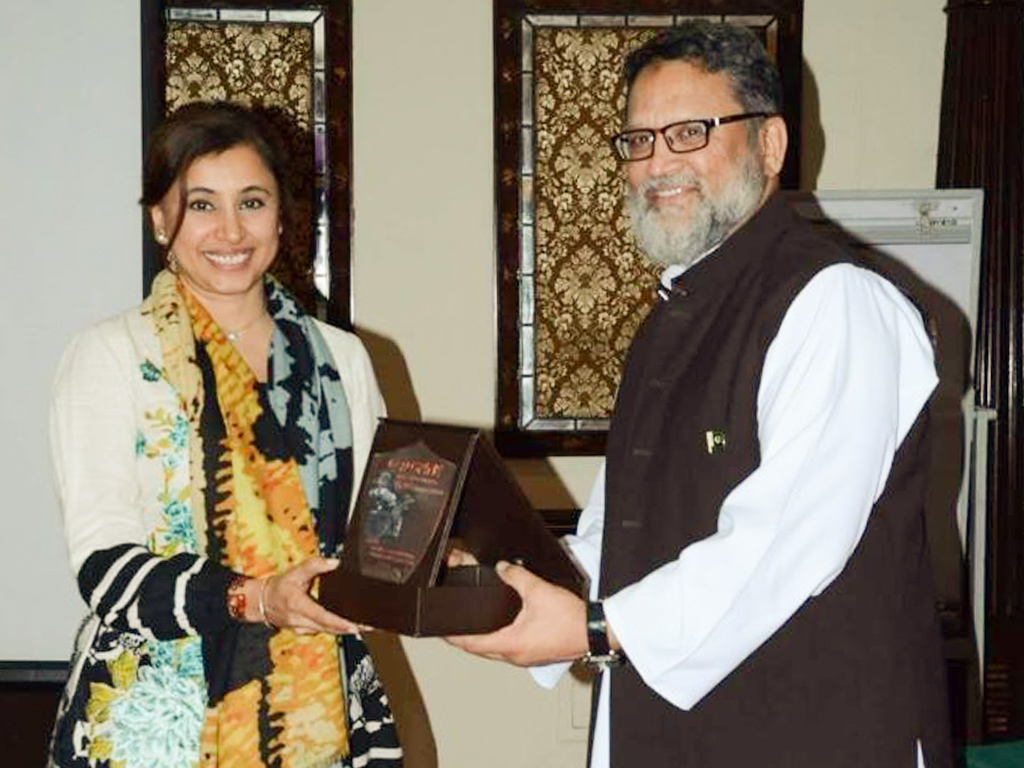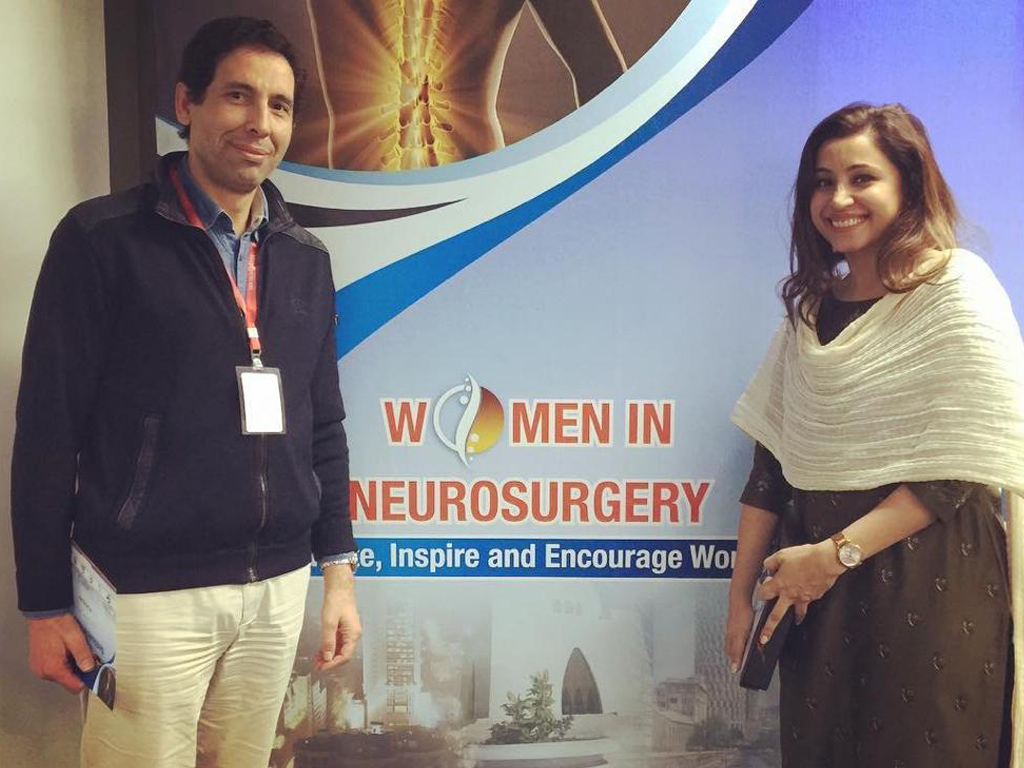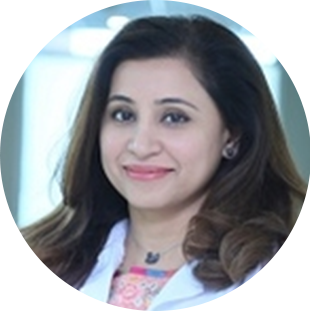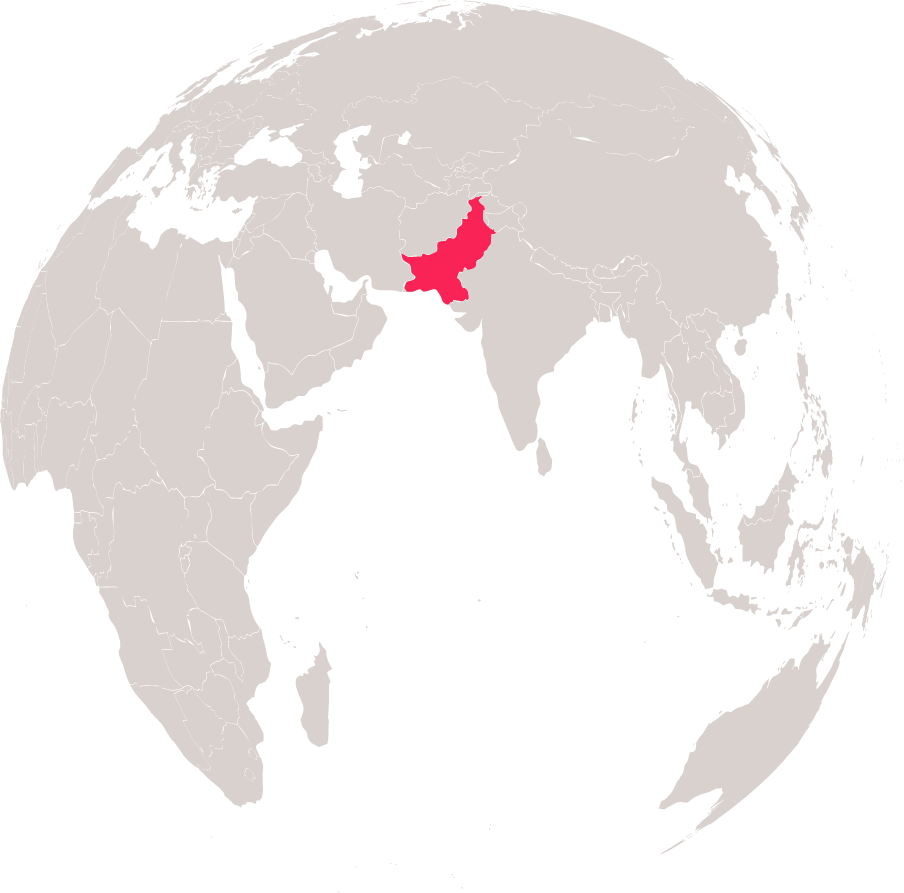
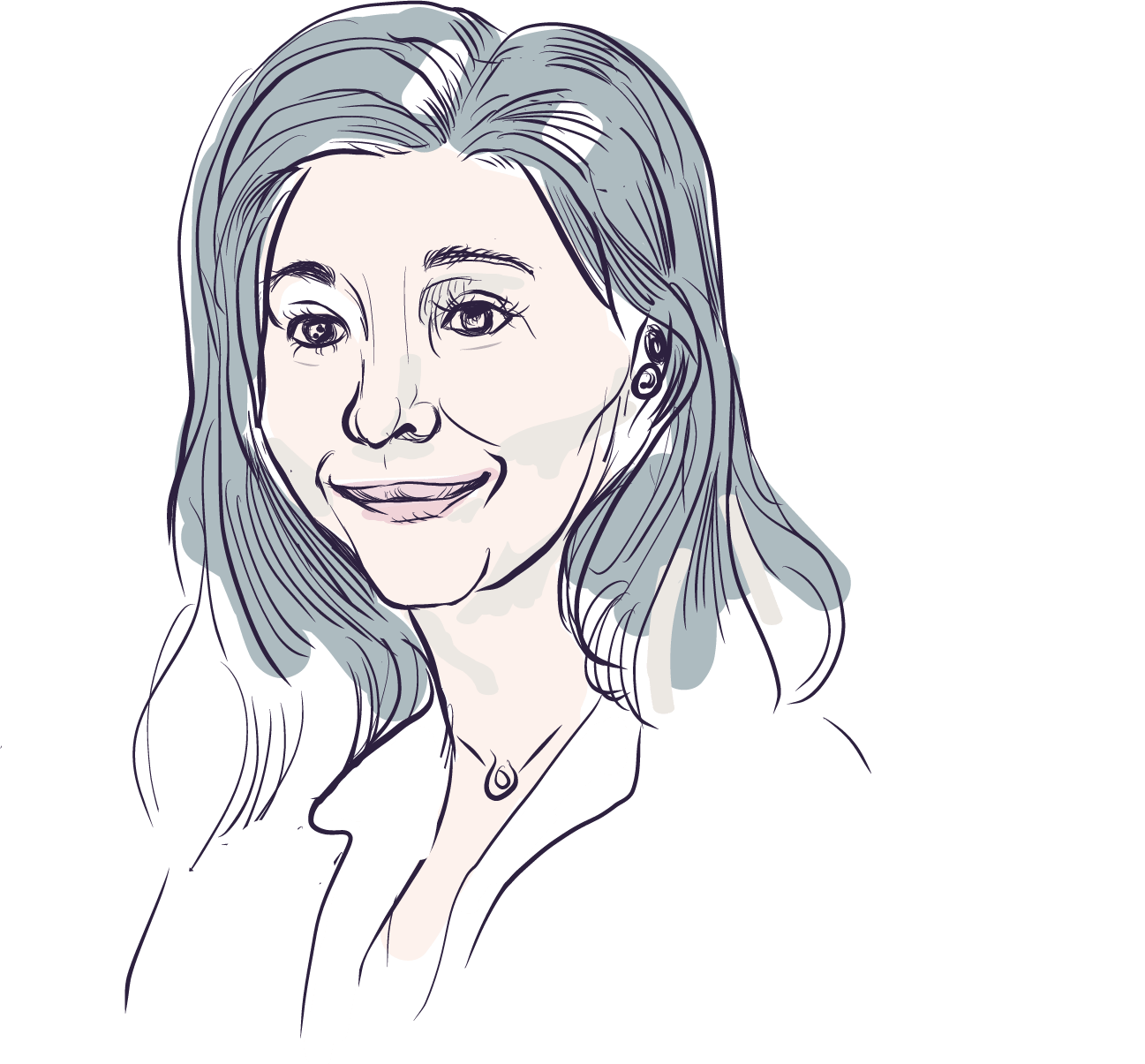
AO Spine Pakistan Council member Aneela Darbar chose neurosurgery and trained in the US at a time when sending your daughters abroad alone was unheard of in her home country. She tackled taboos and glass ceilings and became the first US-trained female neurosurgeon in Pakistan. Today, she is a sought-after international speaker who has given more than 100 talks on neurosurgery and on empowering women.
Here, Darbar explains what drives her and sends a strong message to aspiring spine surgeons as well as AO Spine.
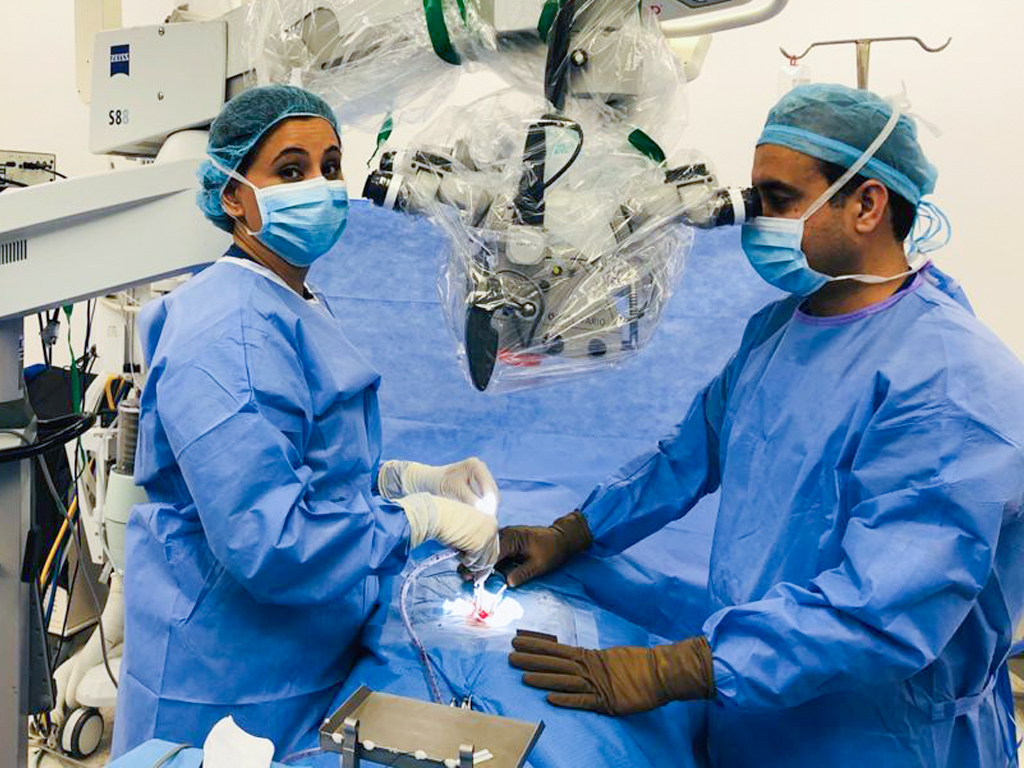
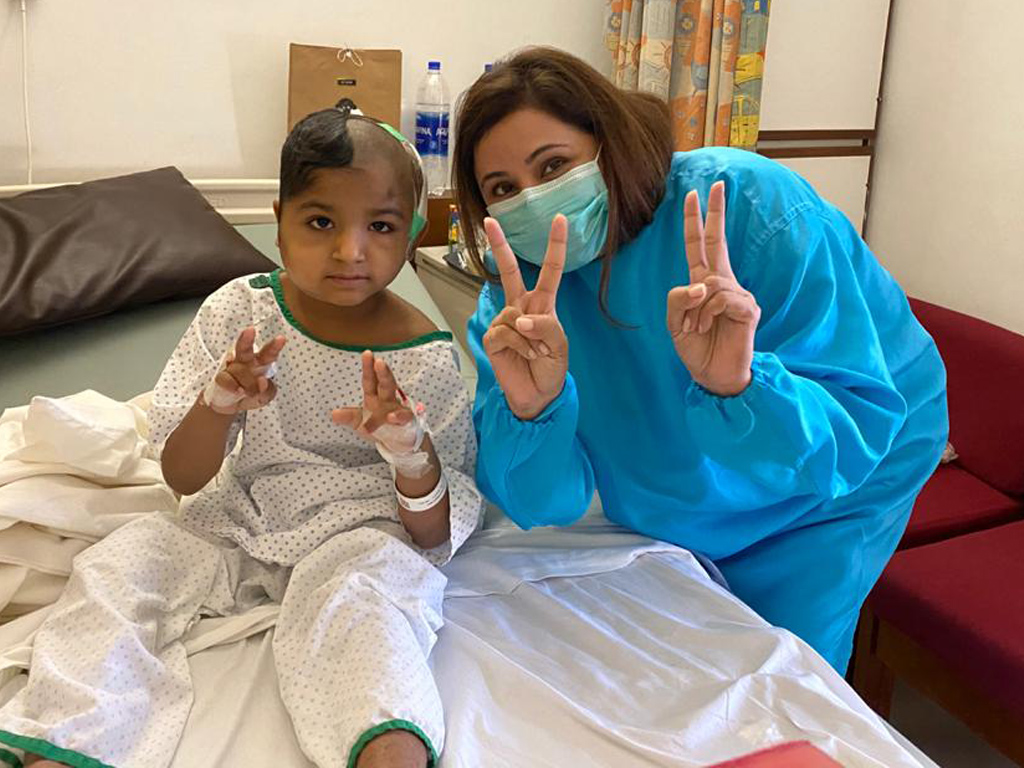
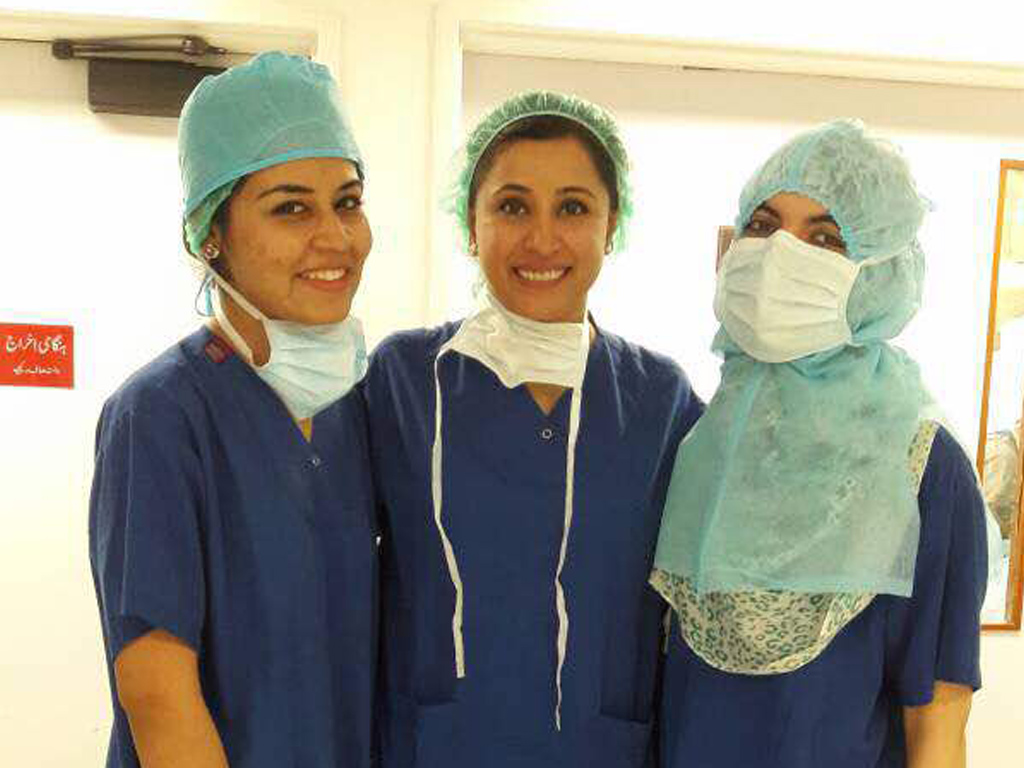
Why did you choose neurosurgery?
I was always fascinated with the brain, intrigued by how the left half of the brain controlled the right half of body, and especially how the brain and the eyes function! We see everything upside down and mirror image. From early on, these questions gravitated me towards the brain and neurosciences.
I was fortunate to do my initial medical residency training in the early 2000s in a hospital which had a superb neurosurgical training program. It helped me to clarify my vision to pursue neurosurgery. During my sixth year of training, a very dynamic spine surgeon joined our hospital. I spent an entire year doing spine surgeries with him. He helped me learn different procedures and complicated scoliosis surgeries. Although my fellowship was in brain surgical procedures, spine has always been a big part of my practice.
AO Spine is the one platform where I feel that ortho and neuro come together and strive for the best. I feel no discrimination.
How did you find AO Spine?
I got involved through the local spine chapter, Dr Amir Aziz, and the fellows. I attended an AO Spine course and really liked it. Next, they invited me to become faculty. I realized that I really enjoyed teaching and being part of AO Spine. Then the country council position for neuro was announced, and the rest is history!
The way AO Spine has designed the local chapters and given them responsibility to run courses—both local and international—with world renowned faculty is very special. The AO faculty are willing to come to low- and middle-income countries and teach. This is a commendable thing that AO Spine started.
We are role models for the next generations in what they can become.
In many parts of the world, including Pakistan, there remains a tussle about whether orthopedics or neurosurgery should do the spine surgery. I just think the best people should do it. AO Spine is the one platform where I feel that ortho and neuro come together and strive for the best. I feel no discrimination between ortho and neuro in AO Spine—we are all spine surgeons. That is what attracts me to AO Spine.
How would you like to see your role in AO Spine develop in the future?
You know what I really want? I feel the lack of women in the AO Spine upper executive ranks. AO Spine should promote women orthopedic surgeons and neurosurgeons also in the executive and bring us forward. We are role models for the next generations in what they can become. I was trained in America and live in Pakistan, I did my fellowship in Australia, I worked in Oxford, I've seen a lot of the world, and everywhere I felt the glass ceiling. No matter how hard we try, we are not yet in the critical numbers and we cannot break this glass ceiling on our own.
But we can if men are with us. That is one big project I would say AO Spine must take on: Bring women orthopedic and neurosurgeons into leadership positions, so that more women want to become surgeons.
Is there a personal achievement you would like to share?
One spinal cord tumor case has really stuck in my mind. This young girl in her early 20's was harboring a large tumor in her cervical spine. By the time she came to my clinic, she was in a bad shape, not able to walk, one hand useless, and drooling because she couldn't swallow. The tumor almost reached her brain stem area.
Her parents came to me as a last resort. I said to them, "Look, the tumor is so large and has reached critical areas. I'm afraid she may not be able to support her respiration during the operation. She may not make it. And if she does, she may need ventilatory support for the rest of her life." But they felt there was no other choice.
The operation was long, and a lot precision and monitoring were needed. She stayed on the ventilator in the intensive care unit for a week and went home with a tracheostomy. She was unable to walk or move her arms when she came for the stitch removal.
Three months later, I saw a girl walking towards my clinic door. I didn't recognize her, because in my mind she did not walk. Only when I saw her parents did I realize it was Sadaf. Her walk was not 100 percent, but she walked without assistance which was the big deal. She could speak, she could swallow.
I gave her some quality of life that she did not have.
I remember how shocked and surprised I was—I had not expected this at all! She is still doing well. I think I gave her some quality of life that she did not have.
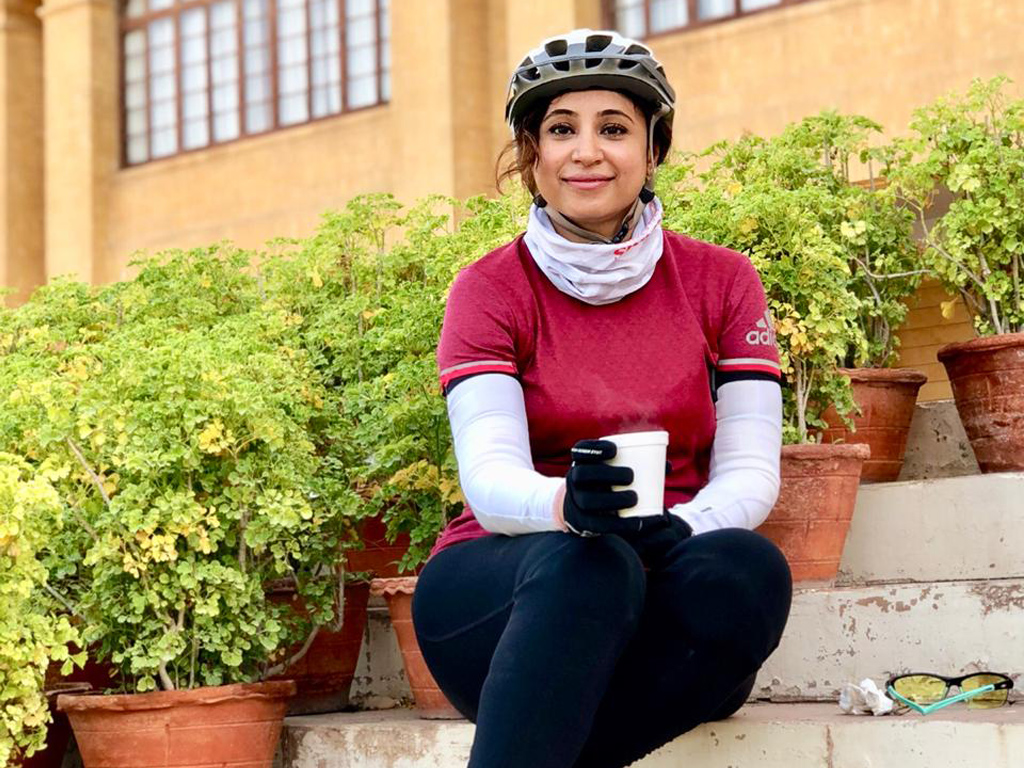
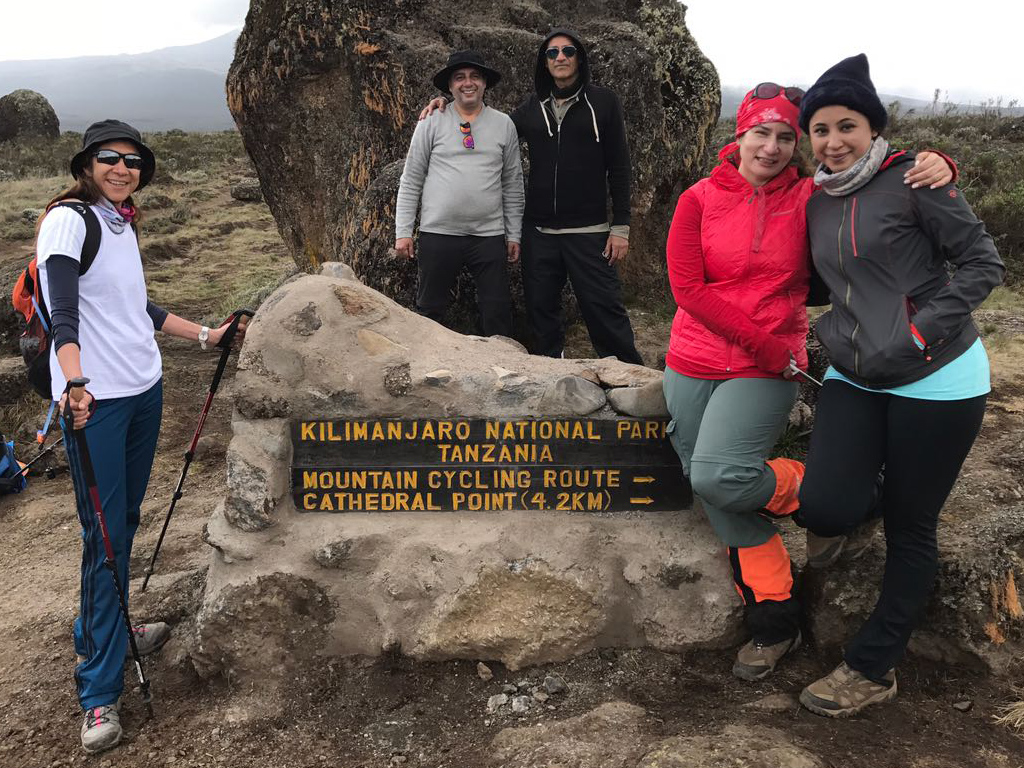
What do you find most challenging in your work?
When I returned to Pakistan in 2013, being female was the most challenging thing. The image you see in your head when you hear "neurosurgeon" is a 60-year-old gentleman with white hair and glasses, looking very professorial, right? Back then, people would look at me and never believe I could remove a tumor from a person's spine.
But since then my concept has completely changed.
If your intentions are clear and honest, nothing is impossible, and the sky is your limit. This is a message I want to give all young budding orthopedists and neurosurgeons in the AO Spine world.
I want everyone to know that even if people discriminate you because of gender, time will declare it a nonissue. People now come to me because they want to be operated on by me. Don't be disheartened if you are rejected because of your gender. Keep on doing the good work, give patients what they need, make them comfortable talking to you. That is the service I try to give, not just neurosurgical, but also my personal service.
Take it form a neurosurgeon: Gender is just something going on in people's heads. When they look at me now, they see a neurosurgeon. That is the one piece of information I want to give to budding orthopedic or neurosurgery females. Don't let it depress you or hamper your progress or success. In time you will prove it to the world.
Who have been the biggest influencers in your career?
You only become successful by standing on the shoulders of giants. There is no way you can be somebody unless you have people in your life to support you.
My initial big support, of course, comes from my father who believed in me. I come from a conservative Pakistani family and sending girls abroad on their own to study was unheard of. But my father trusted me, believed in me, and supported me both emotionally and financially.
You only become successful by standing on the shoulders of giants.
In those days only 1.5 percent of United States neurosurgeons were female, and this was another glass ceiling to conquer. I am thankful to Dr Charles Hodge for giving me the opportunity. He didn't think of me as a female or a Pakistani. He just saw that this girl has the passion. Otherwise I would not be here today.
During my residency, I had another mentor, Dr James Holsapple, who has supported me throughout my neurosurgical career, and during my fellowships I found Dr Charlie Teo from Sydney, Australia, and Dr Saleem Abdulrauf from Saint Louis, Missouri. They all helped me become a better neurosurgeon.
Health care technologies are advancing rapidly. How is this affecting your work?
I think technology helps a lot, using navigation to put in screws or computed tomography scans in the operating theaters. And minimally invasive spine surgery (MISS) has changed people’s notions of spine surgery. People used to be afraid something would happen to their legs, the scar would be huge, they'd be left with never-ending back pain, or be paralyzed. Due to new technologies, we have much smaller incisions, shorter operation times, and less hospitalization. I feel patients are more comfortable and the entire perception has changed. Now, when you say, "Let's do spine surgery," people react in the same way as if you were talking of an appendix or hernia operation.
The other thing that has changed, and what COVID-19 has highlighted even more, is teleconsultation. I had experience with this when I worked in Saint Louis and we directed a surgeon in Rome through surgery. A specialized surgeon can help another surgeon with surgical procedures even in another country. This is also something AO could pick up: Anywhere there is a lack of good surgeons, they could help with teleoperations.
What are the biggest challenges for spine surgery in Pakistan?
Spine surgery in Pakistan is not standardized. Big private hospitals have most of the instruments needed and hire surgeons trained in the United States, United Kingdom, or Australia. You will be able to do surgery by international standards. In public hospitals, unfortunately, it's a different story. You can count with your fingers the hospitals where you would want to refer your relatives or friends.
I am trying to set up this hospital with high quality standards and ethical practice at a low price.
There is no national health care system, and people pay out of their own pockets. It is the saddest thing, when almost 90 percent of the population lives below poverty line. These people will sell their houses, or sometimes, to save one child, they would sell their other children to pay the hospital bills.
What is your next goal?
I recently took a new job in Multan, and I am the medical director of a newly built hospital. I am trying to set up this hospital with high quality standards and ethical practice at a low price. I aim to set up this hospital with the same quality and standards as my hospital in Karachi.
